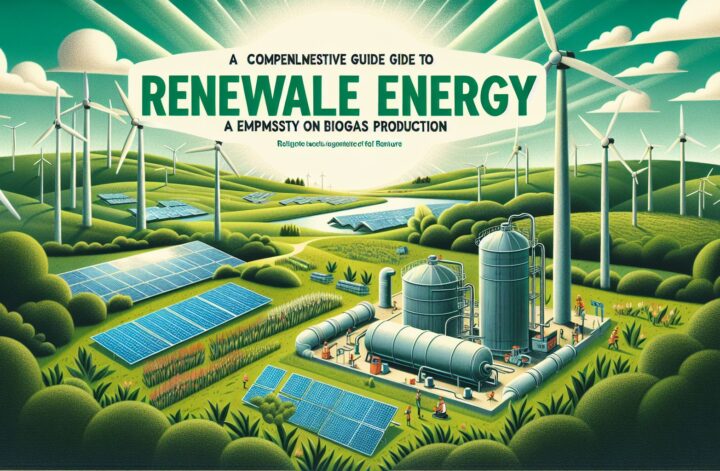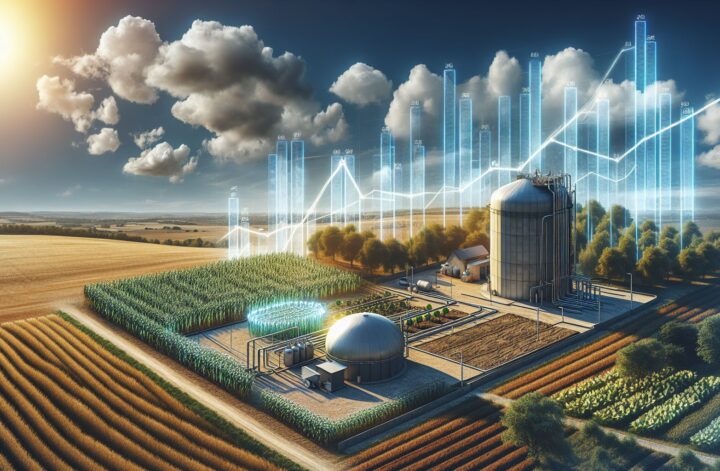Over the years, the increasing concern for environment degradation has made renewable energy a vital topic of discussion. Among various forms of renewable energy, biogas stands out due to its unique production process, and the considerable social, economic, and environmental benefits it generates. In this article, we will deeply dive into what biogas is, its production process including steps like Hydrolysis, Acidogenesis, Acetogenesis, and Methanogenesis, its upgrading process to turn it into high-quality fuel, and its role in greenhouse gas reduction.
What is Biogas?
Biogas, a renewable energy source, is a type of biofuel that is naturally produced from the decomposition of organic waste. When organic matter, such as agricultural waste, manure, municipal waste, plant material, sewage, green waste, or food waste, is broken down in absence of oxygen, it releases a blend of gases, primarily methane (CH4) and carbon dioxide (CO2), which is called biogas[^1^].
The Biogas Production Process – A Multistep Pathways
The process of biogas production involves four main stages: Hydrolysis, Acidogenesis, Acetogenesis, and Methanogenesis, all carried out in an anaerobic digester[^2^].
Hydrolysis
In this stage, complex organic substances such as proteins, fats, and complex carbohydrates are broken down into simpler soluble organic compounds. This process enhances the surface area of the organics, enabling the subsequent steps.
Acidogenesis
The soluble compounds from the previous step are converted into volatile fatty acids (VFA) and alcohol. Additionally, other byproducts are hydrogen, carbon dioxide, and trace elements such as nitrogen and sulfur.
Acetogenesis
After Acidogenesis, volatile fatty acids and alcohols are further broken down into acetic acid, hydrogen, and carbon dioxide.
Methanogenesis
The last step is Methanogenesis which is the production of methane, the primary component of biogas, from the byproducts of the previous stages.
Upgrading Biogas – From Value-Added Biogas to Biomethane
Biogas in its raw state consists of 55-65% methane, 30-40% carbon dioxide, and traces of other gases. This composition may not be ideal for all applications, and in these cases, biogas can be upgraded to a higher energy content gas – biomethane, that is more than 95% methane[^3^]. The upgrading process unwinds through methods like water scrubbing, pressure swing adsorption, and membrane separation.
The Role of Biogas in Greenhouse Gas Reduction
Biogas production significantly reduces GHG emissions through multiple facets. The methane produced during the anaerobic digestion process, if released into the environment, is 21 times more harmful than carbon dioxide. However, by capturing and utilizing it as fuel, we reduce its detrimental environmental impact[^4^]. Moreover, the digestion process reduces the mass of waste, leading to less demand for landfill space.
Conclusion
Renewable energy is a rapidly emerging field that has the potential to bring long-term sustainability. Biogas, one of the key players in this domain, bears great potential in producing clean and sustainable energy. As research deepens, we’ll move toward effective and efficient ways to harness this versatile energy source.
References
[^1^]: Biogas Production: Current State and Perspectives
[^2^]: Anaerobic Digestion: Process, Products, and Applications




